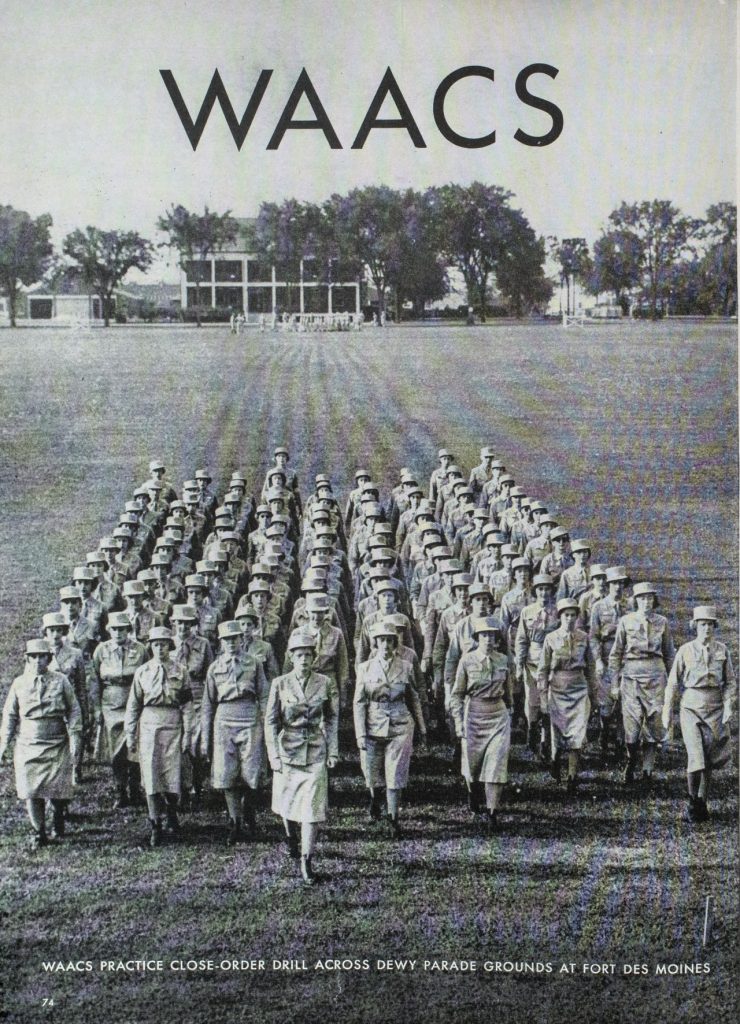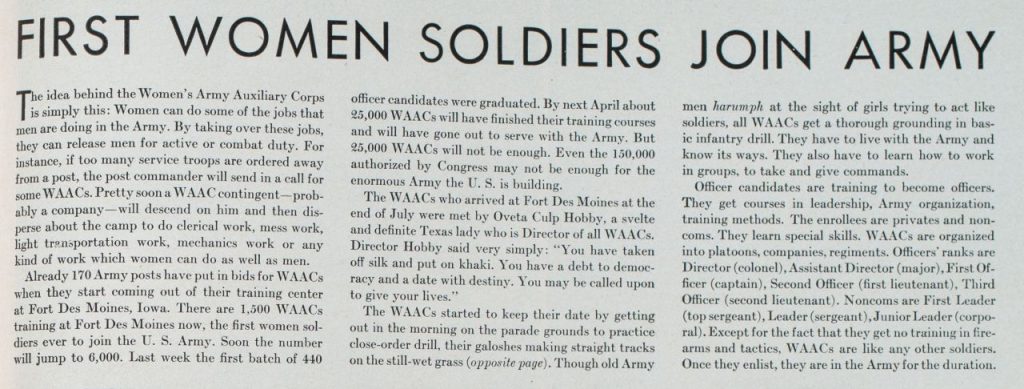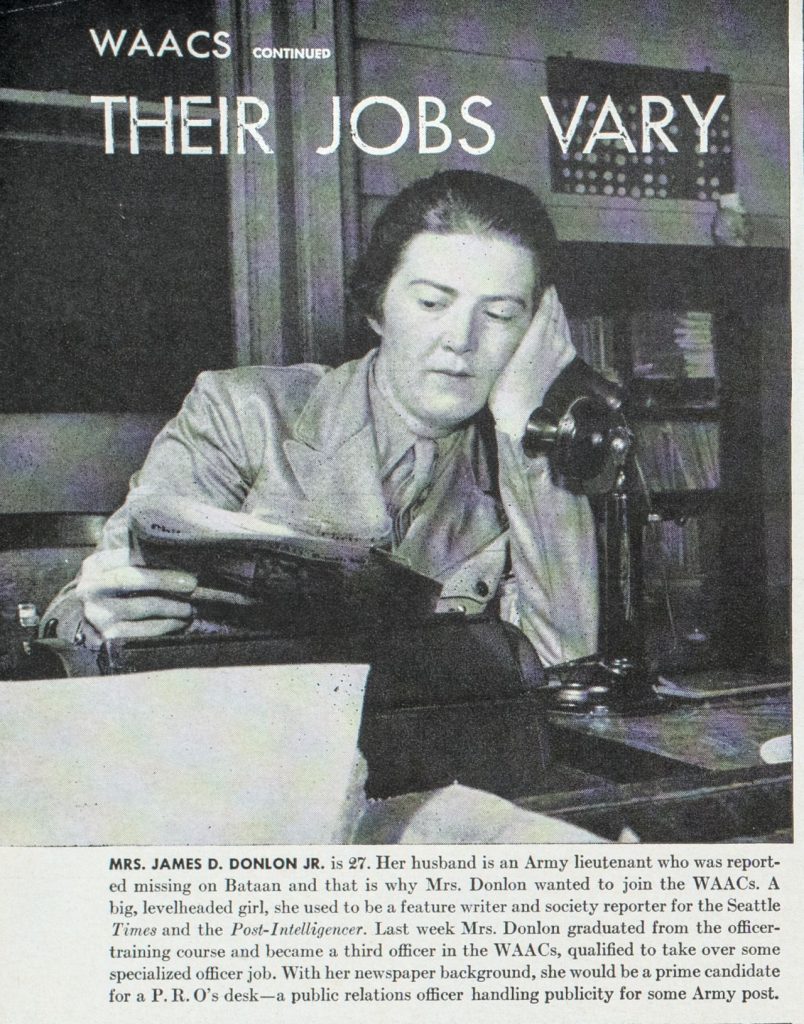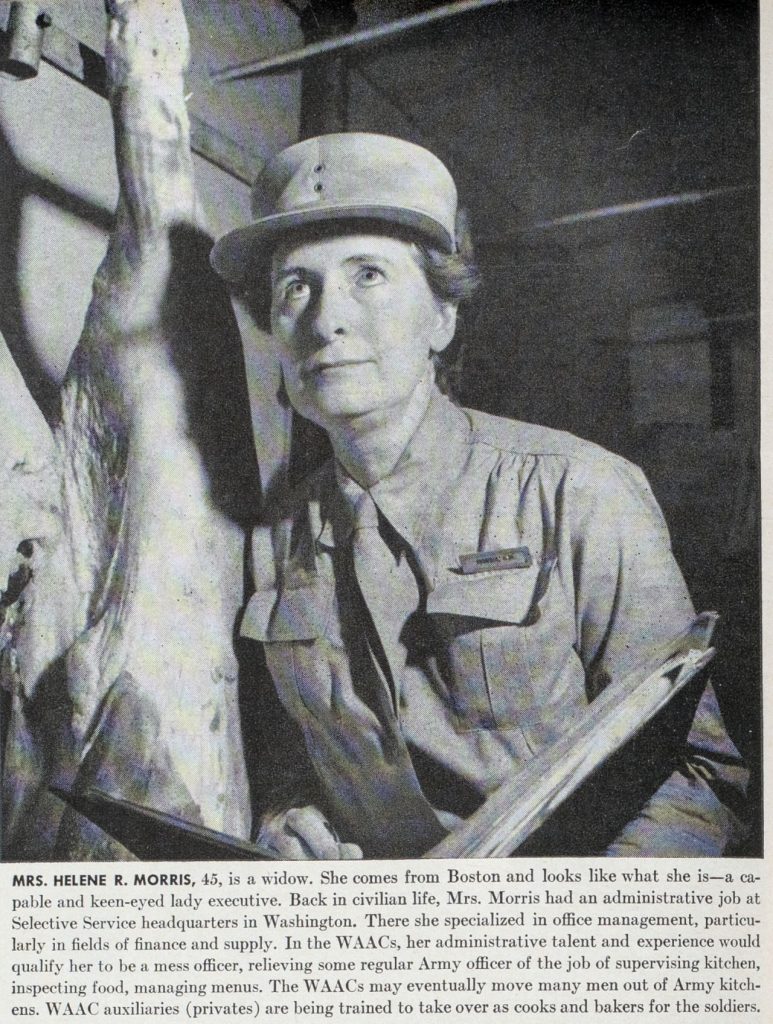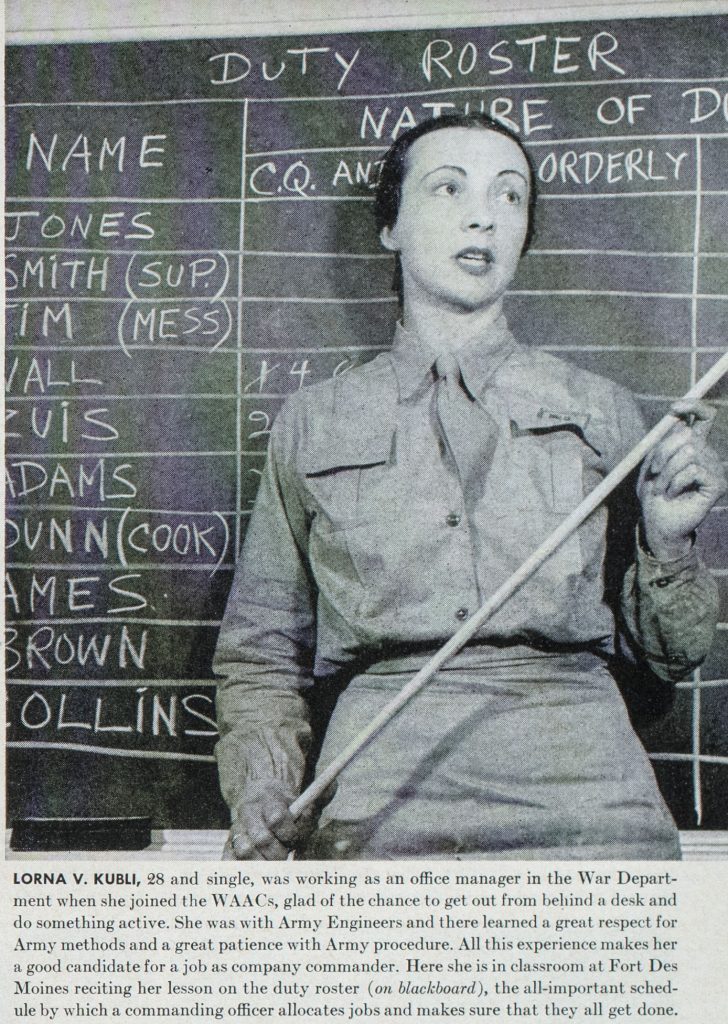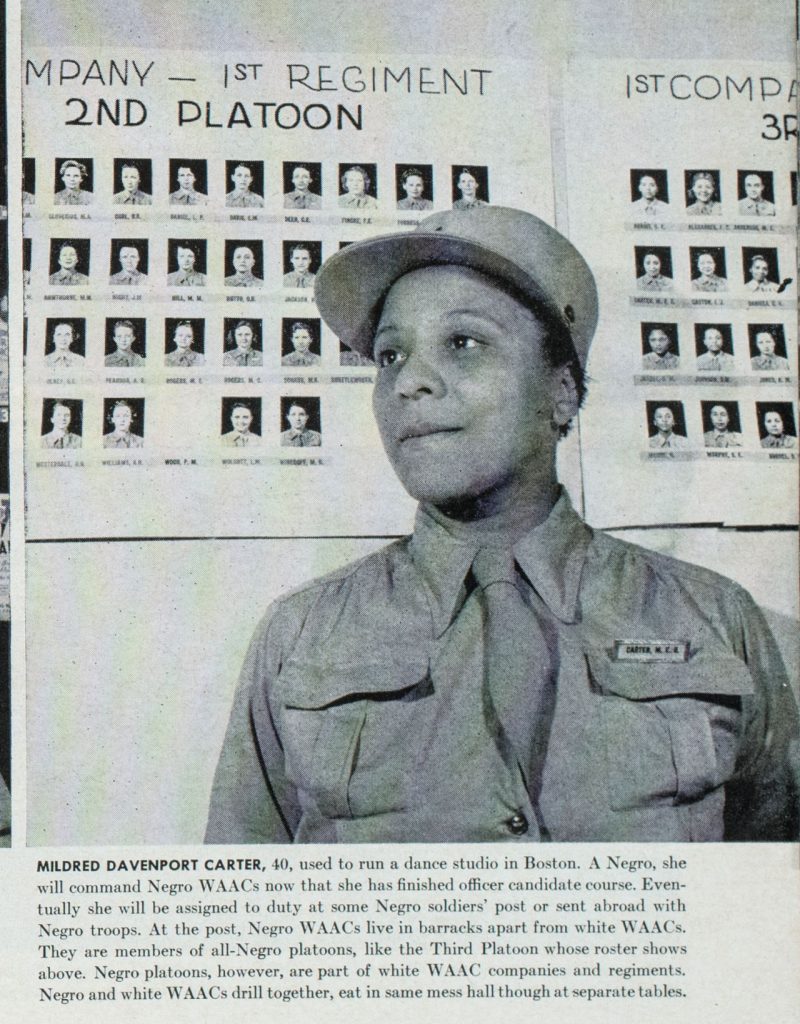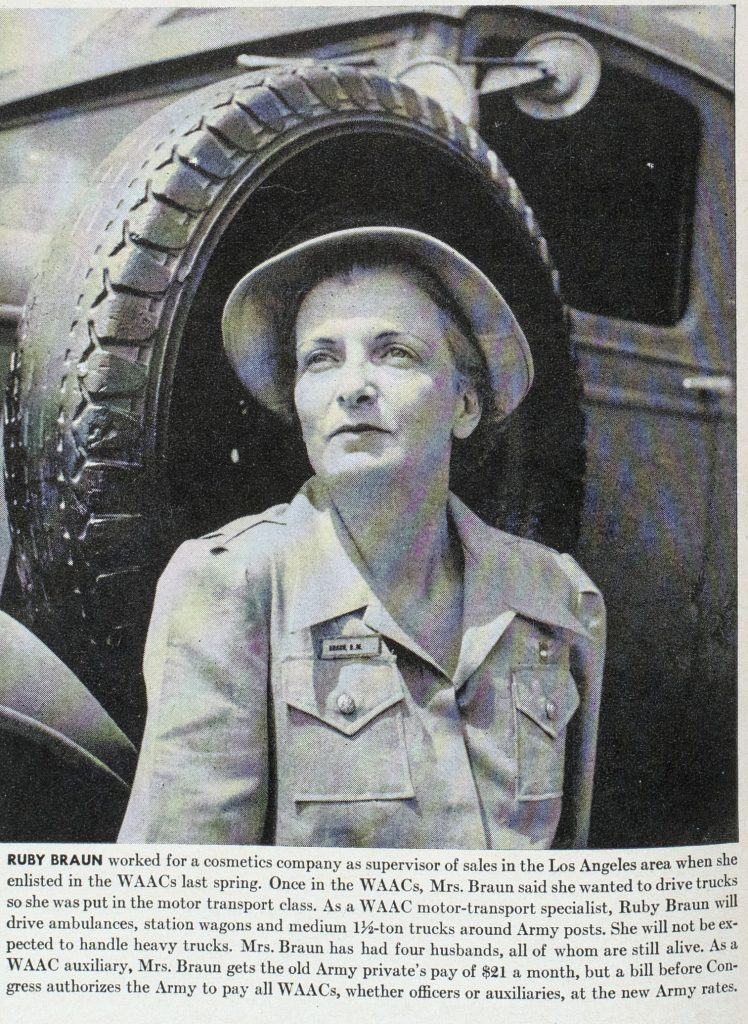Background
In May 1941, Congresswoman Edith Nourse Rogers of Massachusetts proposed the creation of a women’s auxiliary for the United States Army. She wanted to guarantee women an official role (and access to military benefits) in the coming war. Congress finally approved her idea in May 1942 and formed the Women’s Army Auxiliary Corps (WAAC). Oveta Culp Hobby of Texas was named the first director of the WAAC. The Army gave her the starting rank of colonel on July 5, 1943.
Initially, the Army trained WAACs to take over jobs like typing, stenography, driving, and data analysis so that the soldiers doing those jobs could fight in the war. Most WAAC officers were over 25 years old, college-educated, and working in office or teaching jobs before enlisting. The WAAC welcomed African American enlistees, but segregated white and Black platoons.
As the war grew, so did the WAACs’ roles. WAACs served as air traffic monitors, radio operators, pilots, code breakers, mechanics, electricians, and more. By 1943, General Eisenhower requested WAACs abroad. They were stationed in North Africa, Europe, and the Pacific. That same year the Army fully absorbed the WAAC program. Enlistees were no longer auxiliary members. Instead, they were members of the new Women’s Army Corps (WAC).
The Army began sending WACs home after Victory in Europe Day (V-E Day) on May 8, 1945. However, the WAC program continued after the war. In 1948, President Harry S. Truman signed federal legislation creating a permanent place for women in the Army.
Approximately 150,000 women served as WAACs/WACs during World War II. Six hundred fifty-seven of them received service medals, including the Bronze Star and the Purple Heart.
About the Image
This article appeared in the September 7, 1942 issue of Life magazine. Marie Hansen, a staff photographer at Life and one of the few women employed by the magazine, took all the pictures for this article. Life magazine was the first American magazine to tell stories primarily through images. From the late 1930s through the early 1970s, it was an influential publication that shaped the way Americans’ understood the world around them.
Vocabulary
- auxiliary: Providing additional assistance or work. Auxiliary groups are separate from the group they are helping. (See below for a difference use of this word!)
- auxiliaries: Privates or non-officers in the WAAC.
- Bronze Star: A medal for heroic or special service awarded to members of the U.S. Army.
- company: A group of soldiers. Larger than a platoon.
- data analysis: The process of collecting information, primarily in the form of numbers, and drawing conclusion based on that information.
- enlist: Join the military.
- General Dwight D. Eisenhower: One of the most important American generals during World War II. Served as supreme allied commander in Europe from 1943 until the end of the war. Served as president of the United States between 1953 and 1961.
- harrumph: A sound made out of frustration or disgust.
- platoon: A group of soldiers. Smaller than a company.
- Purple Heart: A medal awarded to members of the U.S. Army wounded or killed in combat.
- segregated: Divided into categories based on race, gender, or other characteristics.
- stenography: Recording or writing quickly by using a notetaking method known as shorthand. A highly-valued skill in offices, particularly before modern computers were available.
- Victory in Europe / V-E Day: Victory in Europe Day, May 8, 1945. The day the Allies declared victory over the Axis powers in World War II.
Discussion Questions
- What was the WAAC program? What did WAACs do during the war?
- What motivated women to join the WAAC program?
- What kinds of jobs did women do before joining the WAAC? How did this shape the jobs to which they were assigned?
- The article states that some older members of the military “harumph” at the site of the WAACs. What does this mean? What does it tell you about the discrimination WAACs faced?
- Read the profile of Mildred Davenport Carter. How did African American women fit into the WAACs? How did segregation work in the WAAC program?
Suggested Activities
- APUSH Connection: 7.13: World War II: Military
- Ask each student to read one of the WAAC profiles included in this resource. Students should identify why the woman joined the Army, what work she did before enlisting, and what work she did as a WAAC. Encourage students to teach one another about what they have learned.
- Focus on African American WAAC Mildred Davenport Carter. Connect her profile to other resources related to African Americans in World War II, including the photos of industry workers, the life stories of Mary McLeod Bethune and Pauli Murray, and additional resources in the World War II & NYC curriculum guide.
- Compare Mildred Davenport Carter’s profile to the account of two Black social workers in World War I. What do these sources tell you about race and the military in the world wars?
- All three major branches of the military – the Army, Air Force, the Marines, and the Navy – had a version of the WAACs. Create a broader understanding of this work by pairing this article with the article describing WAVE uniforms, as well as additional materials in the World War II & NYC curriculum guide.
Themes
POWER AND POLITICS; WORK, LABOR, AND ECONOMY


